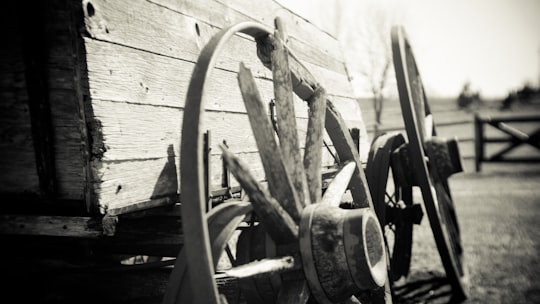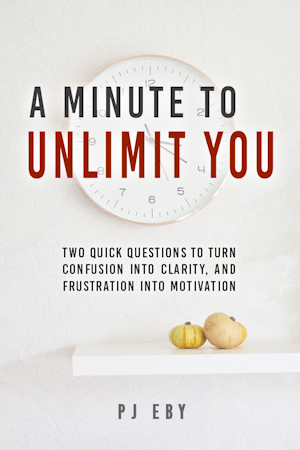It’s Christmas morning, in a hotel room in Dallas, and I’m getting dressed for an early dinner with my wife’s family.
And I’m thinking to myself about the fact that I’m about to go to meet with mostly the same people I just spent Christmas Eve with, only now I’m dressing up in fancier clothes to do it. Not only that, but the night before that, we were dressed really casually for dining out with just Leslie’s mom.
So I find myself wondering, why the difference in clothes?
And my knee-jerk reaction is, “well, with Leslie’s mom, we can really just relax and be ourselves pretty much. We don’t have to be all formal and fake.”
And then I think, “wait a minute… that implies that the real me is scruffy and unkempt, and the nicely dressed me is a fake!”
Hmmmmm. That doesn’t make any logical sense, does it? And how in blue blazes did I end up with that idea?
Almost immediately, images from childhood spring to mind, reminding me of all the times my mother hurriedly cleaned up for company, and admonished us to be on our best behavior. All the times she put on false fronts when dealing with almost anyone outside the family, pretending to be the nice perfect mother in front of company, when ten minutes earlier she was screaming at us – and would resume the screaming ten seconds after the guests were gone.
Huh. So that’s where I got it from. Dressing up nice, acting nice, cleaning house… all that stuff is what you do to fool other people about who you really are. And now that I’m writing about it, I see the places where my dad’s actions and beliefs supported this idea in other ways. For example, that clothing is either comfortable (and to be worn whenever possible) or good looking (to only be worn when necessary).
We had different sets of towels, linens, plates, and so forth: one for us, and the “good” ones, to be saved for company. Indeed, the more I think about it now, the more examples I find of this peculiar dichotomy: the best is for appearances, the rest is for who we “really” are.
Now, I’m not blaming my parents, and it’s not clear to me that the beliefs I picked up from them are necessarily the same beliefs they were living out. (After all, I imagine it’s possible to believe that you should offer company the best you have, without necessarily believing you don’t deserve good things yourself.)
In other words, any conclusions my brain drew, are my own responsibility.
But it’s interesting to think about how much of “who we are” can be drawn from the background of our childhoods. Not the foreground activity, the overt beliefs and behaviors our parents intentionally try to embed in us, but in the covert beliefs implied by our parents’ choices and actions.
I suppose, as my father used to put it, “actions speak louder than words.” Which makes sense, since most of the machinery in our heads was evolved to deal with actions, not words.
So who do you think you are? Do you identify with your best moments, the times you did things right? The times you were kind or generous or compassionate? The times you thought things through, stood up for what you believe in?
Or do you identify with your worst moments? The times you gave up on yourself, the times you snapped at the people you love, the times you didn’t follow through?
If we look at “just the facts”, we see that both kinds of moments are equally “real”, just as I have worn both casual clothes and formal ones. So from a purely logical point of view, it makes no sense to label one set of experiences “real” and the other “fake”.
But our culture doesn’t always encourage us to label ourselves good, and we often get better treatment through being self-deprecating. We can also sometimes avoid undesired responsibility or avoid disappointment, by emphasizing our flaws. For that matter, we don’t have to worry about others making fun of our failures, as they might if we claimed to be good at something beforehand.
Unfortunately, our brains don’t compartmentalize this behavior as an act we put on for company. And so we conclude that the person we are at our worst, is our “real” self.
And once we come to that conclusion, we start living as if it were true. And before long, it is.
But it doesn’t have to be that way.
You could believe in yourself, instead.
And that will make all the difference.
–PJE




And now that I’m writing about it, I see the places where my dad’s actions and beliefs supported this idea in other ways. For example, that clothing is either comfortable (and to be worn whenever possible) or good looking (to only be worn when necessary).
The thing is, he was pretty much right. Let’s put it this way… would you enjoy wearing a suit and tie and dress shoes to go down to the coffee shop and hang out with friends? When it comes down to it, it really is fake (there’s nothing at all natural, or comfortable, about a tie). 🙂
I’m a long-time reader, by the way, and apologize for making my first comment a disagreement post. 🙂
“The thing is, he was pretty much right.”
Ah, but the subtlety is as to what is considered “possible” vs. “necessary”. Many people would *never* be seen – or even *wear* clothes that don’t look good. Different value system, you see.
Plus which, comfortable and good looking aren’t necessarily contradictory, either. Yours (and my dad’s) model of the nature of clothing represents only a subset of the “real” reality of clothing.
Which is kind of the whole point of this post. 🙂
Plus which, comfortable and good looking aren’t necessarily contradictory, either. Yours (and my dad’s) model of the nature of clothing represents only a subset of the “real” reality of clothing.
Yeah, I know. 🙂 Technically, while the clothes I wear are comfortable, they’re not necessarily bad looking.
But I still maintain that there’s nothing good about Adam’s Apple Crushers… er, I mean ties. 🙂
thankyou:)